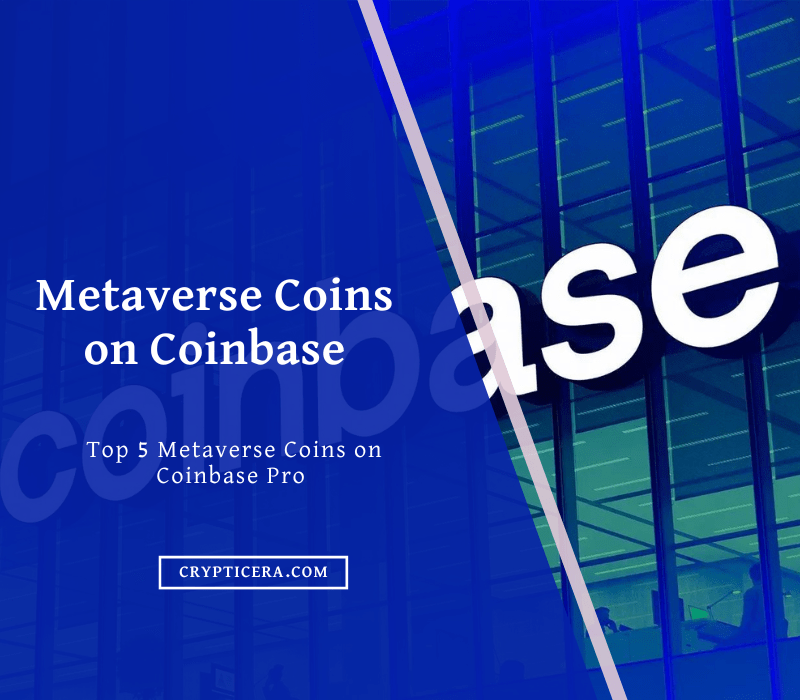With the growing popularity of decentralized finance (DeFi) and non-fungible tokens (NFTs), the demand for faster and cheaper transactions has increased exponentially.
Arbitrum is a layer 2 scaling solution for Ethereum that aims to increase the network’s transaction processing capacity while reducing gas fees.
One of the essential components of this process is an Arbitrum bridge, which enables users to transfer their assets from one network (mainly, Ethereum blockchain) to Arbitrum and back. However, with so many options available in the market, choosing the best Arbitrum bridge can be a daunting task.
In this blog post, we will explore some of the cheapest and Fastest bridges to Arbitrum and their features to help you make an informed decision.
Comparison between Best Arbitrum Bridges
| Rank | Name | Chains | TVL | Mcap/TVL |
|---|---|---|---|---|
| 1 | Synapse | 17 | $85.13m | 2.25 |
| 2 | Multichain | 53 | $45.58m | – |
| 3 | cBridge | 25 | $18.69m | 6.31 |
| 4 | Poly Network | 32 | $811,933 | – |
| 5 | Wan Bridge | 19 | $321,830 | – |
| 6 | Hyphen | 6 | $300,609 | – |
6 Best Bridges to Arbitrum Network Explained
1. Synapse Protocol (Ethereum ⇄ Arbitrum)
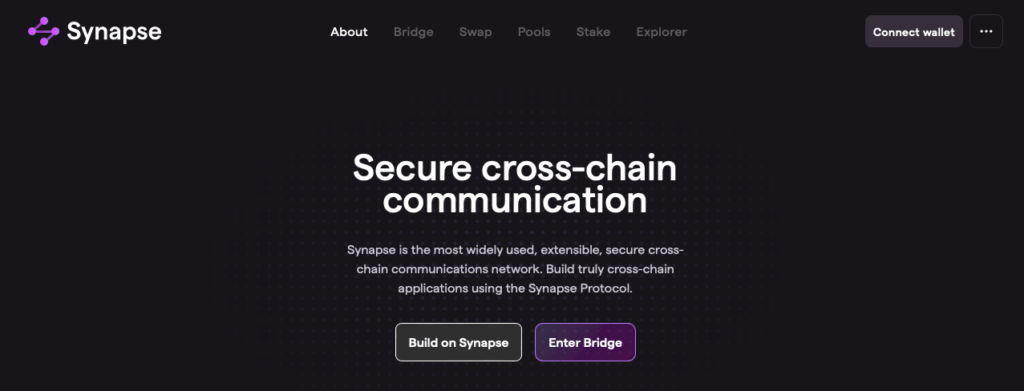
Total Value Locked (TVL): $83 Million
Synapse Protocol is a revolutionary cross-chain layer that facilitates seamless interoperability between different blockchains and Arbitrum.
It allows for seamless asset transfers, swaps, and generic communications with cross-chain capability across any L1, L2, or sidechain environment. It also permits decentralized and permissionless transactions.
By enabling new primitives based on its cross-chain design, this special characteristic of the Synapse Protocol also makes it a potent tool for both customers and developers. No matter the operating ecosystem, Synapse makes it simple and effective to conduct blockchain operations.
How to Use Synapse Bridge to Arbitrum
- Launch the Synapse app and navigate to the “Bridge” tab to begin the token transfer process.
- From the available networks, select the one from which you want to transfer your funds.
- Choose the specific token you want to bridge from the dropdown list.
- Select the target chain you want to transfer the funds to from the “Destination” dropdown menu.
- Choose the destination token that you want to receive.
- Input the amount of tokens you want to transfer in the designated field.
- Double-check the transaction details and verify that the amount you will receive is correct.
- Click the “Approve Token” button to authorize the transaction.
- Once the approval is confirmed, click on the “Bridge Token” button to complete the transfer of your tokens.
2. Multichain Bridge
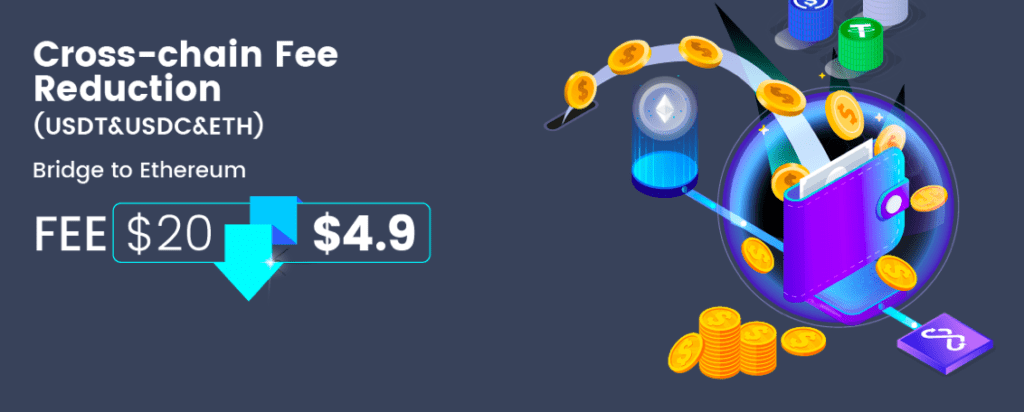
Multichain is a non-custodial and MPC-powered platform for decentralized cross-chain bridging and smart contract methods.
The platform offers a no-slippage bridge, which enables users to perform 0 slippage transfers, eliminating the hidden costs associated with AMM.
The Router allows users to swap between any two chains freely, reducing fees and making it easier to move between chains.
It supports 3457+ projects and 86 chains, with a free listing, easy integration, and quick deployment. It also supports 3457+ tokens.
3. cBridge: Best Arbitrum ⇄ BNB Bridge
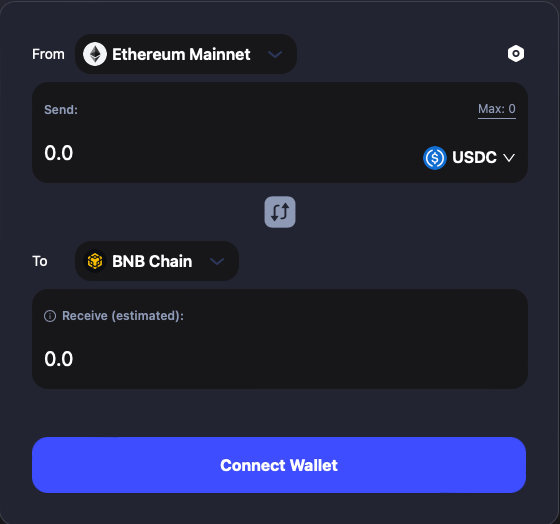
cBridge serves as an Arbitrum bridge to different blockchain networks, allowing users to move assets from one chain to Arbitrum or another.
Since its launch in July 2021, cBridge has broadened its spectrum of supported blockchains, dApps, and cross-chain use cases.
Celer cBridge serves as a versatile interoperability solution, facilitating the seamless transfer of assets and messages across more than 15 chains including Arbitrum in a secure, rapid, and cost-effective manner.
The bridge functions as a decentralized, trustless protocol that employs a system of smart contracts to enable cross-chain interoperability. Users can lock assets on one chain and mint corresponding assets on another, allowing for seamless transfers between chains.
4. Poly Network [Arbitrum to 20 Blockchains]

Poly Network has garnered global acclaim for its outstanding ability to establish blockchain interoperability and construct the infrastructure for Web 3.0.
With its seamless integration into over 20 blockchains, such as Ethereum, Polygon, Avalanche, Fantom, BNB Chain, Arbitrum, Optimism, HECO, OKC, Neo, Ontology, Zilliqa, Elrond, Gnosis Chain, and others, Poly Network has proven to be a reliable global cross-chain protocol.
Its impressive performance has facilitated the transfer of more than $16 billion USD worth of assets across diverse chains, making it an ideal choice for blockchain enthusiasts interested in cross-chain transactions.
5. WAN Bridge
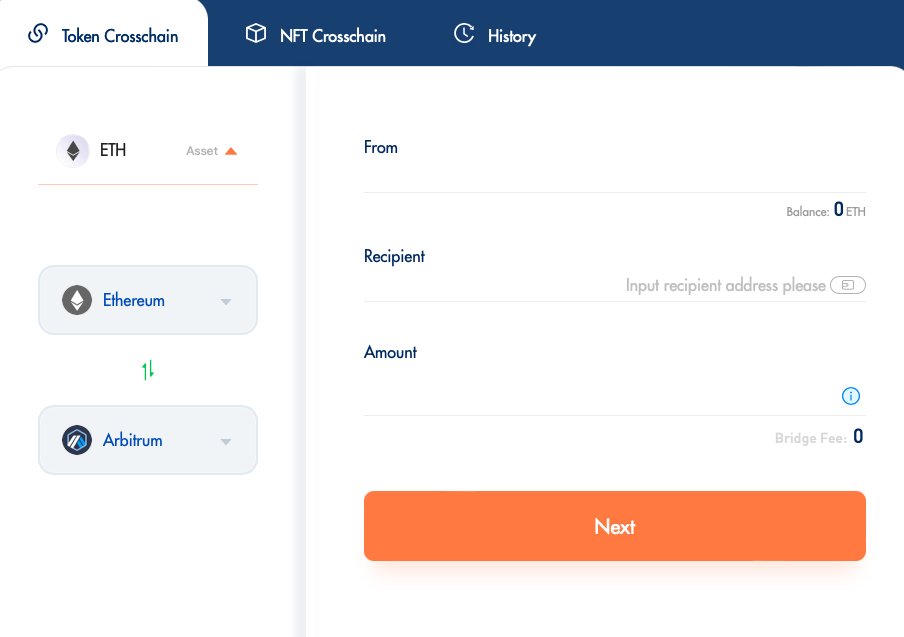
WAN Bridge, also known as Wanchain, is a cross-chain blockchain protocol that aims to connect and facilitate the exchange of value between different blockchain networks. The platform was created in 2017 and is designed to be a bridge between various blockchain ecosystems such as Ethereum, Arbitrum, and other blockchain networks.
It uses a technology called ‘wrapped tokens’ to allow assets to be transferred between different blockchains.
The bridge works by locking the assets on the Ethereum mainnet and issuing a corresponding token on the Arbitrum network, allowing users to trade and transact on the Arbitrum network without incurring the high fees associated with Ethereum mainnet transactions.
6. Hyphen Bridge
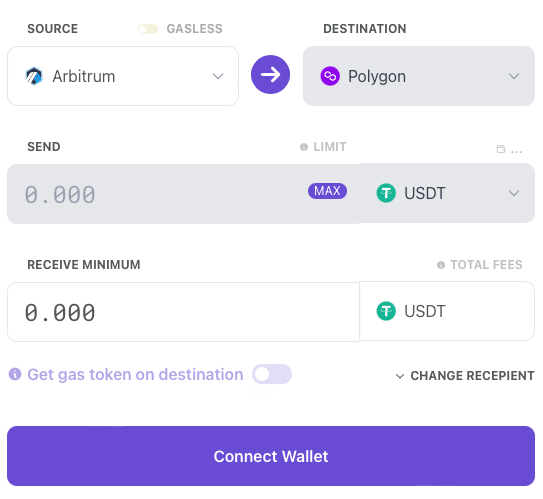
Hyphen Bridge supports multiple Layer-2 solutions, including Arbitrum, Optimism, and Polygon. This means that users can transfer assets between different Layer-2 networks without having to go through the slower and more expensive process of transferring assets to the Layer-1 network first.
The Bridge is built on top of Biconomy’s gasless infrastructure, which means that users can make transactions without having to pay gas fees in the native token of the network they are using.
What is a Blockchain Bridge?
Blockchain bridges enable interoperability between different blockchain networks and can be used to facilitate cross-chain transactions, decentralized exchanges, and other applications.
It allows the transfer of assets, data, or information between these networks. The bridge acts as an intermediary that facilitates communication and ensures the security and integrity of the transactions.
It is usually implemented through a decentralized protocol or software that uses smart contracts to execute transactions.
The process involves locking the assets in one network, creating an equivalent token on the other network, and unlocking the assets on the original network once the transaction is complete.
Pros and Cons of crypto Bridge
| Pros | Cons |
|---|---|
| Enables cross-chain trading | Security risks |
| Facilitates interoperability | Scalability challenges |
| Enables new use cases | Possibility of smart contract bugs |
| Reduces transaction costs | Limited support for certain tokens |
| Increases decentralization | Potential for network congestion |
What is Arbitrum (ARB)?
Arbitrum (ARB) is a layer-2 scaling solution for Ethereum. It aims to increase transaction throughput and reduce fees. It uses Optimistic Rollups to process transactions off-chain, which are then batched and verified on-chain for security.
This reduces congestion on the Ethereum network and allows for faster, cheaper transactions.
What is the Cheapest Bridge to Arbitrum?
Synapse is the cheapest bridge to access Arbitrum. It serves as a multi-chain bridging solution, enabling the transfer of more than 100 tokens across 17 different blockchain networks, including Ethereum and Arbitrum.
In comparison to other similar bridging platforms, Synapse boasts faster transaction speeds and lower fees.
Can I send ETH directly to Arbitrum?
Yes, you can send ETH directly to Arbitrum. Arbitrum is a Layer 2 scaling solution for Ethereum, which means it operates on top of the Ethereum network and uses the same underlying technology. However, it has its own set of validators and consensus rules, which allows it to process transactions more quickly and with lower fees than the Ethereum mainnet.
To send ETH to Arbitrum, you will need to follow these steps:
- Set up an Arbitrum wallet: The first thing you need to do is set up an Arbitrum wallet. You can use any Ethereum wallet that supports the Arbitrum network, such as MetaMask or Trust wallet. Make sure that your wallet is set to the Arbitrum network and not the Ethereum mainnet.
- Get some ETH: You will need some ETH in your wallet to send to Arbitrum. If you already have ETH in your wallet, you can skip this step. Otherwise, you can buy ETH from a cryptocurrency exchange or from a peer-to-peer marketplace.
- Open the Arbitrum bridge: The Arbitrum bridge is a web interface that allows you to transfer ETH from the Ethereum mainnet to Arbitrum. To open the bridge, go to the Synapse website and click on the “Bridge” tab.
- Connect your wallet: Once you are on the bridge page, connect your wallet by clicking on the wallet icon in the top right corner of the screen. This will open a window that prompts you to connect your wallet. Follow the instructions to connect your wallet.
- Deposit ETH to the Arbitrum bridge: Once your wallet is connected, you can deposit ETH to the Arbitrum bridge. Enter the amount of ETH you want to deposit and click on the “Deposit” button. This will generate a unique deposit address for you.
- Send ETH to the deposit address: Copy the deposit address and send the amount of ETH you specified from your Ethereum wallet to the deposit address. Make sure you send the transaction on the Ethereum mainnet, not Arbitrum.
- Wait for the transaction to be confirmed: The transaction may take a few minutes to be confirmed on the Ethereum mainnet. Once it is confirmed, the bridge will detect the deposit and automatically credit your Arbitrum wallet with the same amount of ETH.
Final Thoughts
Overall, there are several best Arbitrum bridges available, each with its unique features and benefits. When choosing a bridge, it’s essential to consider factors such as speed, security, Fees, and ease of use.
As the DeFi ecosystem continues to evolve, we can expect to see more innovative bridges and other solutions emerge to facilitate interoperability between different chains.
